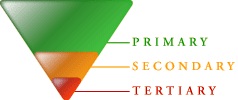RESPONSE TO INTERVENTION (RTI)
Dreamcatcher Direct Instruction Centers (DDIC) understands there is no single recommended approach to implementing an RTI model to facilitate raising achievement in student groups who pull down the overall test scores of any given school. The proven RTI models contain various approaches, i.e., there are a number of basic features such approaches have in common:
- Students foremost receive high quality instruction in general education settings during the regular instructional day;
- All instruction is research-based to the greatest extent possible with the SRA curriculum used by Dreamcatcher;
- Dreamcatcher instructional staff, general education professionals, and other teaching support staff share active roles in student instruction, collect data on student performance, and share the performance data ;
- Student progress is monitored across the curriculum, not just on specific isolated skills;
- Student progress monitoring is ongoing;
- The RTI approach is well documented and is seamlessly integrated into school-wide practice.
Dreamcatcher is capable of offering School Districts with the RTI levels of instruction (Tiers) necessary to make a difference in student achievement for grades K-12. On the subsequent pages, Dreamcatcher will elucidate the most salient and relevant aspects of our philosophy of RTI, already used and proven with the Hyannis, Nebraska School District, in 2009-2010 and the Reno, Nevada School District in 2007-2008 school years.
DREAMCATCHER RESPONSE TO INTERVENTION – LEVELS OF INTERVENTION
Dreamcatcher uses all three tiers of RTI in order to offer a full-spectrum approach for raising student achievement in reading. The 3-Tier Model implements three levels of reading intervention — primary, secondary, and tertiary — to ensure that student’s reading needs are fully assessed as well as addressed.
PRIMARY – TIER 1
Our focus on RTI primary intervention is in support of the regular school-day teacher through a pull-out model of instruction for all our assigned students coming from the general education classroom. Our curriculum (see curriculum section), is designed to serve the majority of students – whether newcomers, ELL, or main-stream in a school, and to reduce the number of children who later become at-risk for reading problems as they progress into the next higher grade.
As Educators already know, RTI Tier I comprises three main elements:
- A core reading program grounded in scientifically based reading research. The program and classroom instruction should address the critical elements in reading instruction: phonemic awareness, phonics, fluency, vocabulary, and comprehension. *The curriculum used by Dreamcatcher is extensively researched to the aforementioned and the critical elements of a reading program.
- Progress monitoring of all kindergarten through third-grade students. Students are administered a benchmark test at least three times per year (fall, winter, and spring) to determine instructional needs. Subsequent progress monitoring probes are then administered by classroom teachers to all students who scored below the initial benchmark. The data that is collected serves to guide the reading instruction provided by the teachers.
*Dreamcatcher provides progress monitoring reports to all students and parents alike; which include a pre & post-test assessment, an individualized student learning plan (SLP), and periodic progress reports (PR). Throughout the entire program, parents and school Administrators are an integral part of the communication process.
- Ongoing Educator Professional Development program providing our staff of teachers with the necessary tools to ensure every student receives our quality reading instruction. Our professional development workshops are designed specifically for each grade level and contain three key elements:
- Progress monitoring and its use in guiding the instructional decision making.
- Elements of a successful reading program include: oral language development, phonological awareness, alphabetic principle, word study, spelling, fluency, listening comprehension, reading comprehension, and written expression.
- Features of effective direct instruction (DI) include; student assessment, student grouping, reading mastery teaching, explicit, intensive and scaffolded learning.
SECONDARY – TIER II
Dreamcatcher knows from experience that one single reading curriculum program is not likely to meet the needs of all students. Therefore, it may be necessary to provide supplemental or secondary programs to address the reading skills of students who are not making adequate yearly progress in their core reading instruction. We have found that the purpose of secondary intervention is to prevent students from continuing a lack-of-progress, and feeling frustrated by falling behind, possibly needing a more intensive intervention.
Tier II provides additional small group instruction to students who score below benchmark criteria in one or more critical areas of reading. Our tutoring intervention is provided to groups of five to eight students for 30-90 minutes per day. Content of the tutoring intervention sessions reflects the important components of reading based on the level of the students and is planned according to progress monitoring data.
Students who progress to grade-level are exited and their progress is monitored to assure on-level reading. Those who do not exit are provided with the third tier of intervention.
TIER III – TERTIARY
Tier III is designed for students with low reading skills and a sustained lack of adequate yearly progress (when provided with primary and secondary intervention). Our tutoring intervention at this level consists of an intensive instructional regimen that includes more explicit instruction designed to meet the individual needs of struggling readers. Group size is further reduced in size (4-5), and the duration of daily instruction is longer at (60-120 minutes) per pull-out session.
Research:
*Association of Direct Instruction (http://www.adihome.org/); www.sraonline.com; Eugene: University of Oregon, College of Education, Institute for the Development of Educational Achievement.


